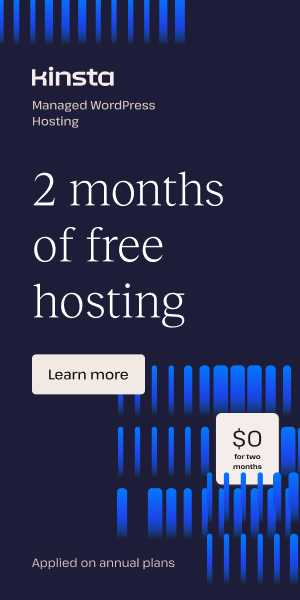How to Use Figma for WordPress Design Documentation
Enhancing Your WordPress Project with Effective Design Documentation
Creating comprehensive WordPress design documentation is an essential step for web designers and developers aiming to deliver seamless projects that connect vision with implementation. Utilizing Figma2WP Service, you can streamline your transition from design prototypes in Figma to functional WordPress themes, ensuring coherence and clarity throughout your workflow. This post thoroughly explores strategic methods for leveraging Figma integration in crafting WordPress design documentation and shares practical tips to optimize your development process.
Understanding the Importance of Design Documentation in WordPress Projects
Design documentation serves as the blueprint that guides developers in transforming creative ideas into fully operational WordPress websites. It clearly communicates design specifications, UI behaviors, and interaction patterns, reducing ambiguity during handoff phases and accelerating development cycles.
- Facilitates collaboration between designers, developers, and stakeholders by providing a single source of truth.
- Ensures consistency in design across different pages and components.
- Improves maintainability by documenting design decisions and versions.
Since WordPress powers over 40% of websites worldwide, aligning your documentation with industry standards helps ensure that your themes or plugins are robust, scalable, and user-friendly. For insight into building strong documentation sites, Seahawk Media offers practical guidance on structuring your WordPress documentation for clarity and accessibility.
Leveraging Figma for Effective WordPress Design Documentation
Figma, a collaborative design tool, brings powerful features that simplify creating and managing design documentation tailored for WordPress projects.
- Utilize Components and Styles: Create reusable components and styles (colors, typography, spacings) in Figma to standardize your design system. Document each element’s purpose and behavior so developers clearly understand styling requirements.
- Organize Your File with Pages and Frames: Separate your design documentation logically by using pages for different site sections (homepage, blog, contact) and frames to display UI states such as hover, active, or mobile responsiveness.
- Annotate Designs: Use Figma’s commenting and note features to add design rationale, functional expectations, or interaction instructions directly onto the elements.
- Create Prototypes: Simulate navigation and interactive flows within Figma prototypes. This dynamic visualization clarifies behavior where static visuals fall short.
These techniques help establish a transparent, scalable design process and ensure your development team’s smooth transition from design to WordPress coding. For comprehensive instructions, consider exploring expert Figma to WordPress guides for practical tips on converting your designs efficiently.
Integrating Figma with WordPress Development Workflow
A seamless Figma integration into your WordPress workflow provides technical synergy between design and code. Here are some recommended approaches:
- Export Assets Directly from Figma: Export SVGs, PNGs, or JPEGs optimized for web use, ready to be utilized within WordPress themes or plugins.
- Use Plugins and APIs: Tools like Figma to Code or UXPin’s Figma integration enable export of code snippets that can accelerate frontend development.
- Collaborate Live: Design and development teams can comment, suggest changes, and iterate in real time via Figma’s cloud environment, keeping everyone aligned.
- Document Design Tokens: Capture key design tokens in Figma (colors, fonts, sizes) and ensure they’re programmatically available in the WordPress theme’s CSS or settings for consistency.
Companies like Shopify and Slack use similar design-to-development workflows powered by design system documentation and robust tooling integrations, highlighting the effectiveness of this approach.
Crafting WordPress Documentation That Enhances Usability and SEO
After preparing your design documentation in Figma and integrating it with WordPress, it’s critical to publish clear and effective documentation that benefits your end users and developers alike.
Consider the following best practices:
- Write Clear, Accessible Content: Use straightforward language without jargon, segment your content into digestible sections, and use bulleted lists to simplify complex instructions. This principle is emphasized by Wedocs, a leader in WordPress documentation best practices.
- Incorporate Multimedia: Embed screenshots annotated from Figma designs, screencasts of interactive prototypes, or short explainer videos. Visual aids significantly improve comprehension, as outlined by the Seahawk Media documentation guide.
- Use Ready Templates and Categorization: Employ plugins such as BetterDocs to categorize content and include search functionality — this improves navigation and SEO performance.
- Maintain Version Control: Track changes in your documentation matching WordPress plugin or theme versions to reduce confusion and support longitudinal project success. The WordPress Developer Resources advise clear indication of versions for users.
Real-World Case Study: Streamlining Design to Development with Figma2WP
Let’s explore how a digital agency in the USA leveraged Figma2WP Service to convert high-fidelity Figma designs into a functioning WordPress theme combined with detailed documentation:
- The design team built their UI components and prototypes within Figma, embedding extensive annotations describing responsive behaviors and animation effects.
- Using Figma2WP, the designs were automatically translated into clean, reusable WordPress theme parts, drastically reducing manual frontend coding time.
- The output included a comprehensive style guide and usage documentation automatically generated by Figma2WP, which the developers used to ensure pixel-perfect consistency.
- Subsequently, the agency published their documentation through a WordPress knowledge base plugin, boosting client satisfaction by reducing support queries by 30%.
This example illustrates how integrating an efficient Figma to WordPress guide into your workflow can optimize project timelines, quality, and communication between design and development teams.
Additional Tools and Resources to Amplify Your WordPress Design Documentation
- Docs Plugin for WordPress – Streamlines building structured documentation pages inside WordPress sites.
- Sketch – An alternative design app with integrations useful for designers working parallel to Figma.
- Confluence – For teams needing advanced collaborative documentation beyond WordPress.
- Adobe XD – Offers design-to-development capabilities comparable to Figma, useful for hybrid workflows.
- CSS Variables – Learn how CSS custom properties can reflect your design tokens directly from Figma variables.
- Elementor – Popular WordPress page builder that works well with custom design systems documented in Figma.
Final Thoughts on Maximizing Your Workflow from Figma Designs to WordPress Documentation
Successful WordPress projects rely heavily on clear, accessible, and well-organized design documentation. Figma’s collaborative environment paired with professional services like Figma2WP empowers teams to bridge design and development efficiently. By following best practices—such as organizing your Figma files, annotating thoroughly, exporting assets smartly, and publishing accessible documentation—you lay a solid foundation for your WordPress site’s success.
Discover how professional guidance can elevate your project by visiting Contact Us and start your seamless Figma to WordPress journey today.
More From Our Blog
Building a Trusted Online Hub for Parents: The Role of Design In today’s digital landscape, parenting websites and child care blogs serve as invaluable resources for families seeking guidance, community support, and expert advice. Creating an engaging, trustworthy, and user-friendly platform is essential for these sites to thrive, and design tools like Figma2WP Service have Read more…
Unlocking the Power of Hands-On Web Design with Modern Tools In today’s digital age, the ability to craft your own website has transformed from a daunting technical challenge into an engaging creative process accessible to enthusiasts, DIYers, and professionals alike. Services like Figma2WP Service empower you to convert your design concepts into fully functional WordPress Read more…


